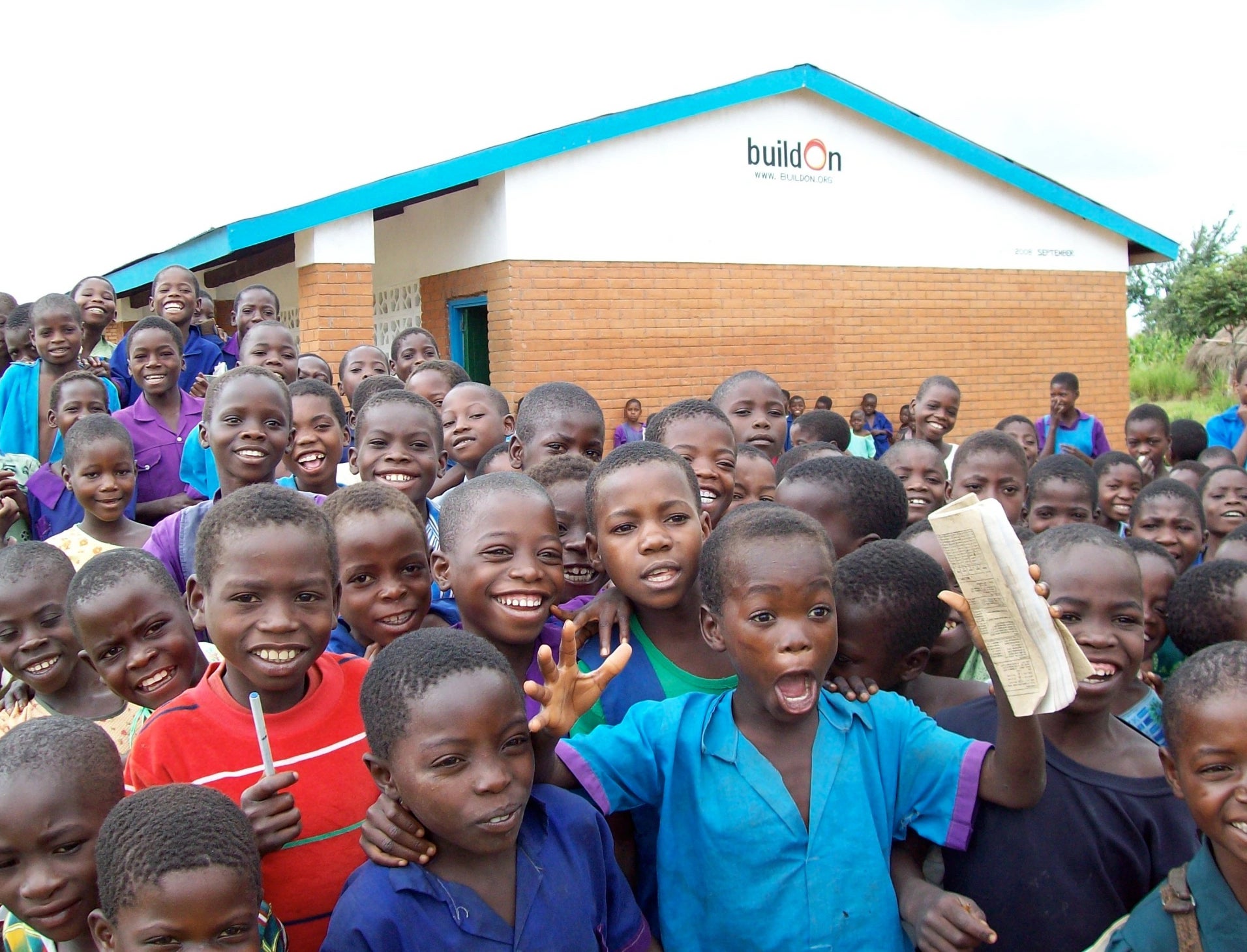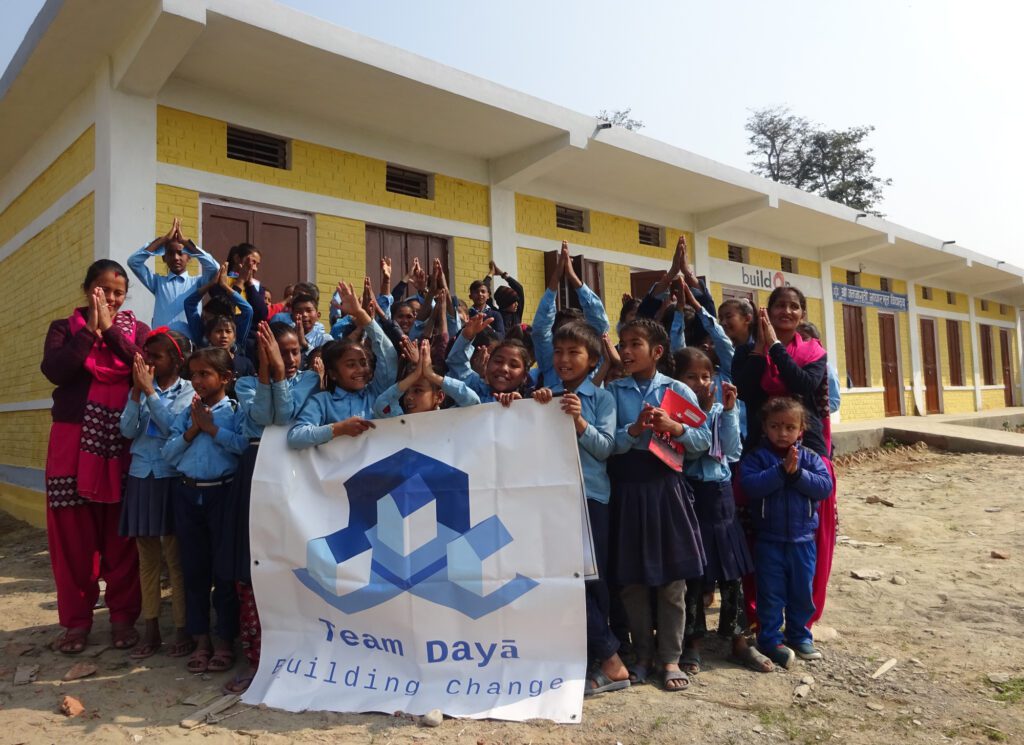On March 17, a crew of 10 ad tech execs will disconnect from their daily lives and head to a small, rural community in the Terai region of Nepal. But they won’t be there on a company retreat or to discuss the latest ad tech trends.
They plan to dig the foundation for a three-room schoolhouse.
The group, which calls itself Team Dayā – “Dayā” means “kindness” in Nepali – was born from a desire to give back in some way, said Jay Sears, a founding member whose résumé includes executive stints at Rubicon Project (pre-Magnite), Mastercard and Contextweb.
Team Dayā started fundraising in 2018 and has built schools in Malawi, Senegal, Guatemala and Nepal.
“So many of us have been fortunate enough to stumble on – essentially trip over – success in the ad tech business,” Sears said. “And having been so lucky ourselves, we started talking about what we could do to make a positive mark.”
More than four walls
The upcoming trip to Nepal will be a homecoming of sorts for Team Dayā, whose first-ever build in 2019 was also in Nepal, in a town of roughly 2,500 people called Dhayapur roughly one mile from the border with India.
The school in Dhayapur is a sturdy permanent three-room structure painted yellow, white and maroon. Today, more than 200 students attend classes there. It was built with cement, brick and steel-reinforced rebar that protects against damage from earthquakes and monsoons. Classes now no longer need to be canceled during monsoon season due to a leaky roof.
But these school buildings are more than just four walls and a weather-resistant roof, Sears said.
“Building a school goes beyond the structure itself,” he said. “We’re building for change and we’re building for education, literacy and the fight against poverty.”
And that starts by breaking down practical barriers to learning.
In Senegal, for example, where Team Dayā built a schoolhouse in 2022, classes were previously held in two temporary classrooms constructed from sticks, leaves, cardboard and millet stalks. It was hot, dusty, and donkeys and cows sometimes wandered inside because there was no door. Not to mention the scorpions.
“In some cases, kids might be walking miles and miles to even get to school, and then the environment isn’t conducive to learning when they get there,” Sears said. “We want to do everything we can to make it easier to get an education.”
Laying the fundraising foundation
But there’s a lot of work and planning that goes into these projects before Team Dayā arrives in a village and starts digging a foundation alongside the locals.
Members – who pay for all personal costs out of their own pocket, including travel – spend months evangelizing the backstory, recruiting volunteers and collecting donations. It typically costs more than $40,000 to fund an entire school, including paint, shovels, nails, nuts, bolts, and paying masons and other skilled laborers contracted by Team Dayā’s NGO partner, buildOn.
Team Dayā has raised money from a long list of ad tech angels and from several corporate donors, including The Trade Desk, WideOrbit and U of Digital. Security startup SecurityPal, whose CEO and Founder Pukar Hamal grew up in rural Nepal before moving to the US as a child, is running a $10,000 matching campaign for the Nepal build in March.
And every dollar is appreciated.
The middle-school-aged son of one of Sears’s former Rubicon colleagues, for example, collected 500 bottles and cans with a nickel deposit on each so he could donate $250 to Team Dayā.
“You don’t have to travel halfway around the world to help,” Sears said. “There’s a way for anybody to make an impactful contribution.”

Building infrastructure (literally)
Once Team Dayā arrives in town, there’s often a community celebration to welcome them.
In Dhayapur, there were tables piled high with fruit and local flowers, speeches of gratitude and hours of dancing. In Senegal, the team was met with a parade of cheering children and galloping horses.
The festivities culminate in what’s referred to as the signing of the covenant, a formal agreement codifying the partnership between the community, the local education authorities, Team Dayā and buildOn. It includes a commitment by the community to complete the construction, staff the school and ensure that boys and girls will have equal access to education.
Every person in the village, including the children, lines up to sign the covenant. And if someone isn’t able to read or write, they use an ink pad to sign the paper with their fingerprint.
Once that’s done, everyone – men, women, children and the volunteers – roll up their sleeves and start digging, sifting dirt, tying rebar, blending cement and laying brick.
Some people cotton to it right away. Datonics CEO Mike Benedek, for instance, who helped build schools in Senegal and Guatemala and is flying to Nepal for the next project, earned himself the nickname “The Bricklayer” because he became particularly adept at laying cinder blocks and applying mortar.
“It’s hard work. It’s sweaty work. But it’s also an opportunity for cultural exchange and laughter,” Sears said. “And the outcome is pretty remarkable – even after just a few days, you can see an outline of a school come up from what was just a patch of dirt before.”

A little perspective
It usually takes around a week to finish the foundation and between two to four months to complete the full construction.
Once the foundation is done, the community takes over the project and Team Dayā departs home to Ad Tech Land, where people have a tendency to navel gaze and get caught up in the minutia of digital marketing.
It’s not that the end of third-party cookies, signal loss, alternative IDs, the scourge of bid duplication and the rise of made-for-advertising sites aren’t important topics.
But a little perspective wouldn’t go amiss, said Lauren Rose, VP of publisher sales and partnerships at Connatix, a new recruit to Team Dayā. She signed up – the March trip to Nepal will be her first build – because, well, there’s also a world outside of ad tech.
“Focusing on things like online privacy and what’s going to happen when the cookie crumbles – that’s a luxury, a privilege,” Rose said. “Team Dayā is about asking what else we can do to make an impact, to do something meaningful – to do something bigger.”
To see a bunch of fun photos from Team Dayā projects and/or to donate, please visit the group’s website.













